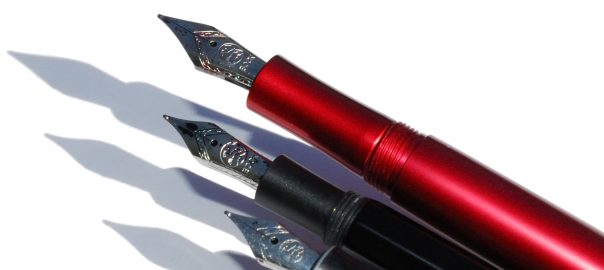Bedoooby-dooby-doooooby-doo, doobedy do do, doobedy-dooo, as Mr. Brubeck so memorably put it. But back in the non-jazz world, we know and love #5 as denoting one of the most popular sizes of nibs. But is it one size or two? No, it’s three. Hmm. Maybe we should give you the long version…
OK, here we go – and be warned, this will get geeky. Firstly, let’s cover what distinguishes a #5 nib from, say, a #6, or even a #8. An obscure mystery, surely? Well not really; the feed is 5 millimetres wide. That’s it.
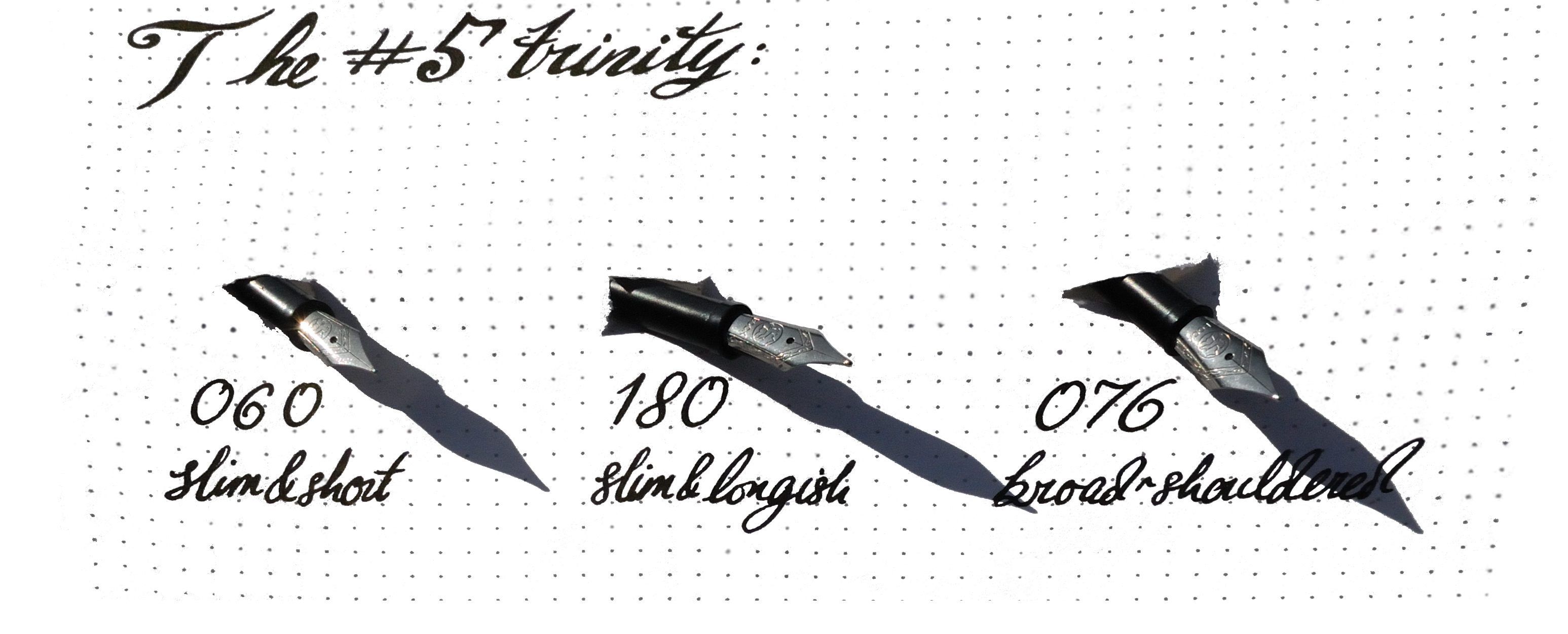
So how can there be so much confusion between small #5s, large #5s, and sort-of in-between #5s? Possibly because we don’t have clearly established names for them. But it turns out that, actually we do. In the language of nib-smiths Bock AG, they are the 060, the 180 and the 076, which might not be memorable labels but they could grow on you (you’ve read this far without dozing off, so there’s hope at least). The simple thing would be to just refer you to the handy guide on the Bock website, but that’s hardly the basis of a riveting article either.
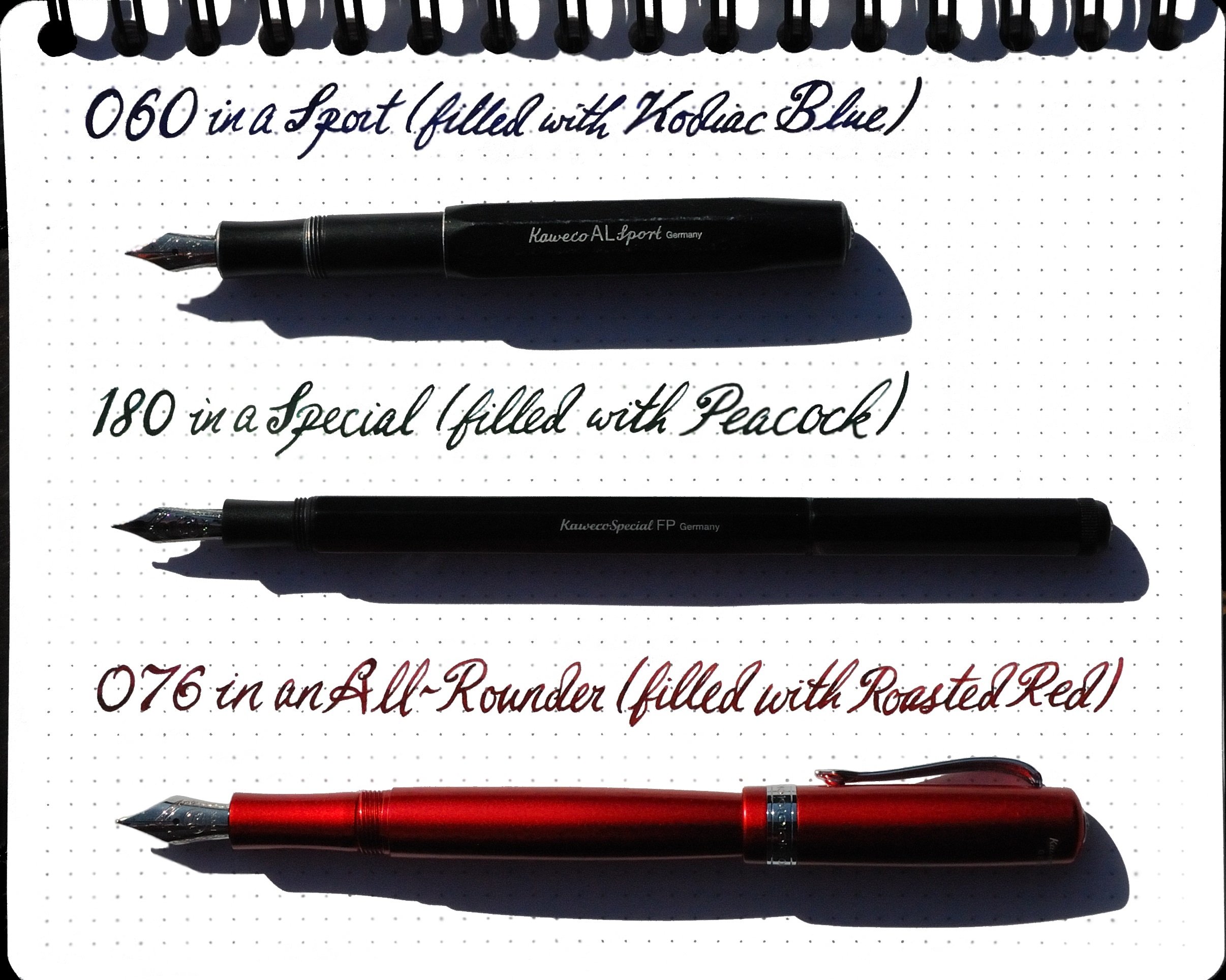
Instead of just reeling out some not-terribly-vital statistics, then, we turned to Phil from Beaufort nibs, who has many advantages over Peter Bock, not least still being with us in the land of the living, a convenient base in Devon, and the lack of a dubious toothbrush moustache (top tip: avoid this unless you actually are Charlie Chaplin). Phil kindly supplied a sample of each, which we fitted to appropriate products from another company which started out in Heidelberg, and filled with various shades of Beaufort ink.

So, let’s start with the version of #5 which you’re probably most familiar with, the humble but sturdy ‘short’ #5 which Bock calls the 060. The reason you’ll know it is, in all likelihood, because you’ve encountered one of two Kawecos; a Sport or a Lilliput. In both cases, the diminutive nib looks the part on a small pen, and with little space to spare in the cap it’s really the only practical choice. Nibs aren’t always perfectly tuned when straight from the factory, so a hands-on supplier like Phil can be good to know if you have one of these pens and fancy changing the business end. We fitted one to a ‘stonewashed’ Sport to put it through its paces. With a short slit measuring 0.85mm from tip to centre of the breather hole, there’s not much wiggle room here so line variation is rare in the steel version, although gold can have a bit of bounce if you ask nicely.
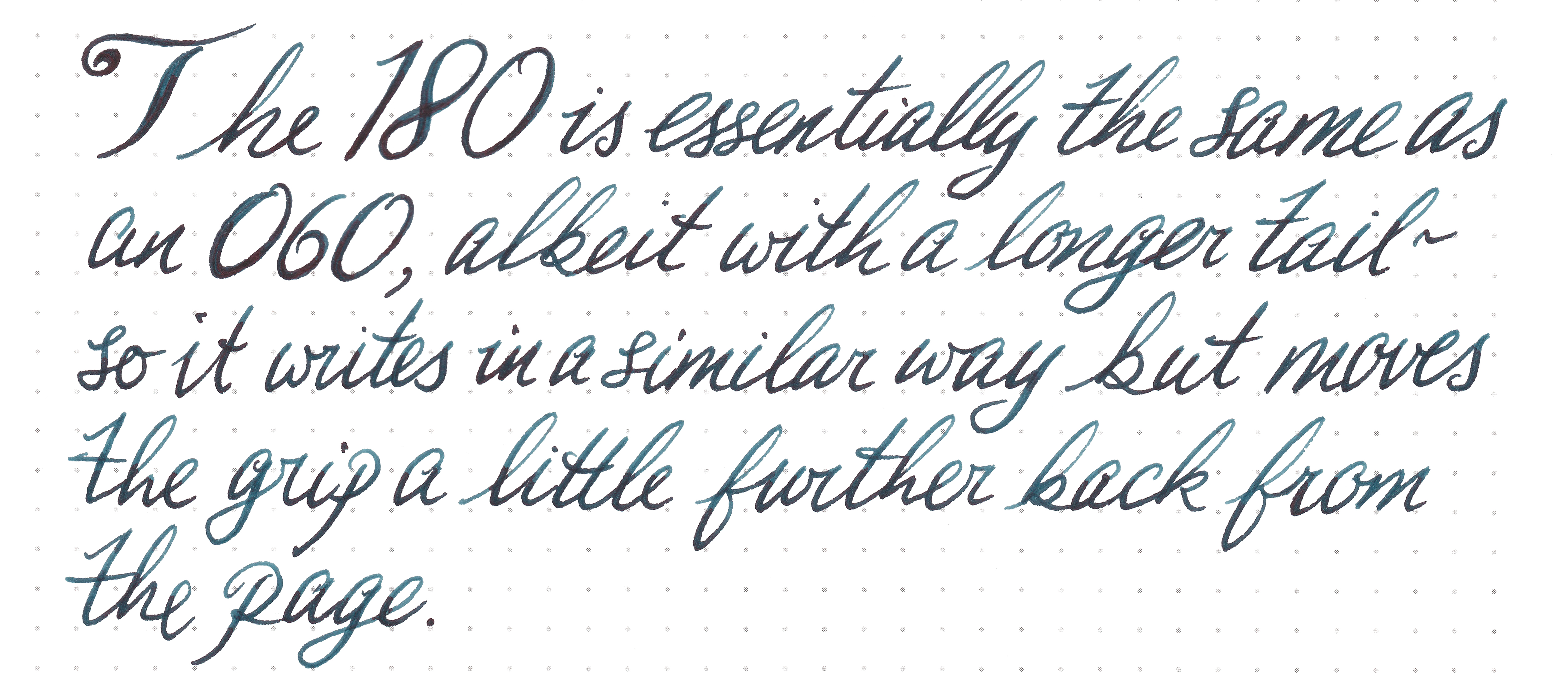
The middle option, sometimes referred to as a ‘standard’ #5 in the trade, is the 180, which is just as narrow as the 060 and with a slit only a millimetre longer, but a more generous tail on the back. You may have seen these on pens like the late lamented Dex, the affordably splendid Super 5 (the name’s a clue), and of course the TWSBI Eco. It can be fitted to Kaweco pens which are narrow but have longer caps, like the Special – so that’s what we did. ‘Worked a treat.
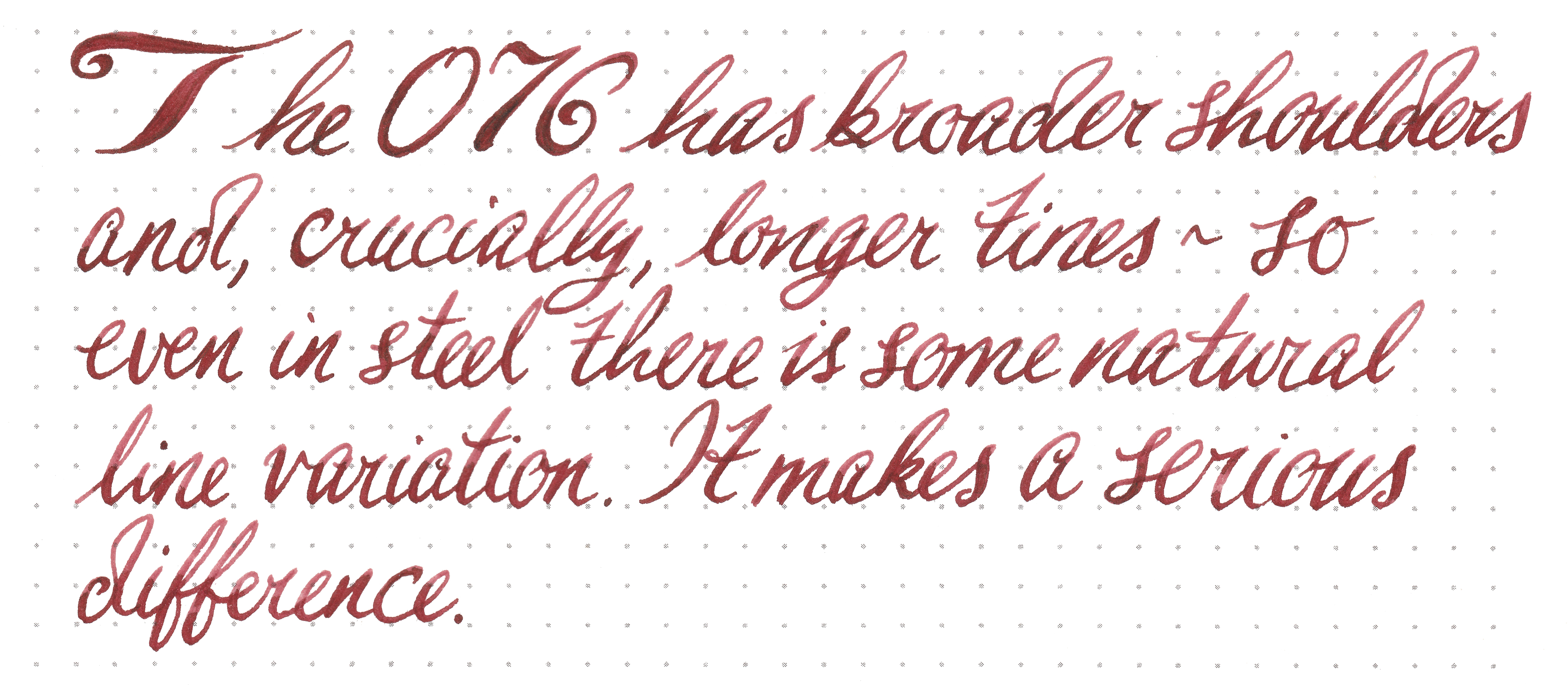
Last but literally not least, there’s the big bold 076, which despite boasting a smaller number than the 180 has considerably wider shoulders. More importantly, it has the longest slit of all three (10.5mm), and thus naturally more flexible tines, whatever the material. You’ll be used to this size of nib in pens like the TWSBI 580, and it also fits many of the larger Kawecos, including the sadly missed All-rounder, the Student and the Dia. On these fairly big pens it looks correctly proportioned, and works better too. Maybe Kaweco should fit them in the first place – although with a minimum order of 5,000 pieces, it’s perhaps understandable that they haven’t yet rushed. In the meantime, have fun experimenting yourself!
In the spirit of fairness we should also mention that lots of other manufacturers offer #5 nibs too, sometimes even in new shapes like JoWo’s ‘arrow’ unit – but by golly life would be simpler if they’d adopt a straightforward numbering system…
